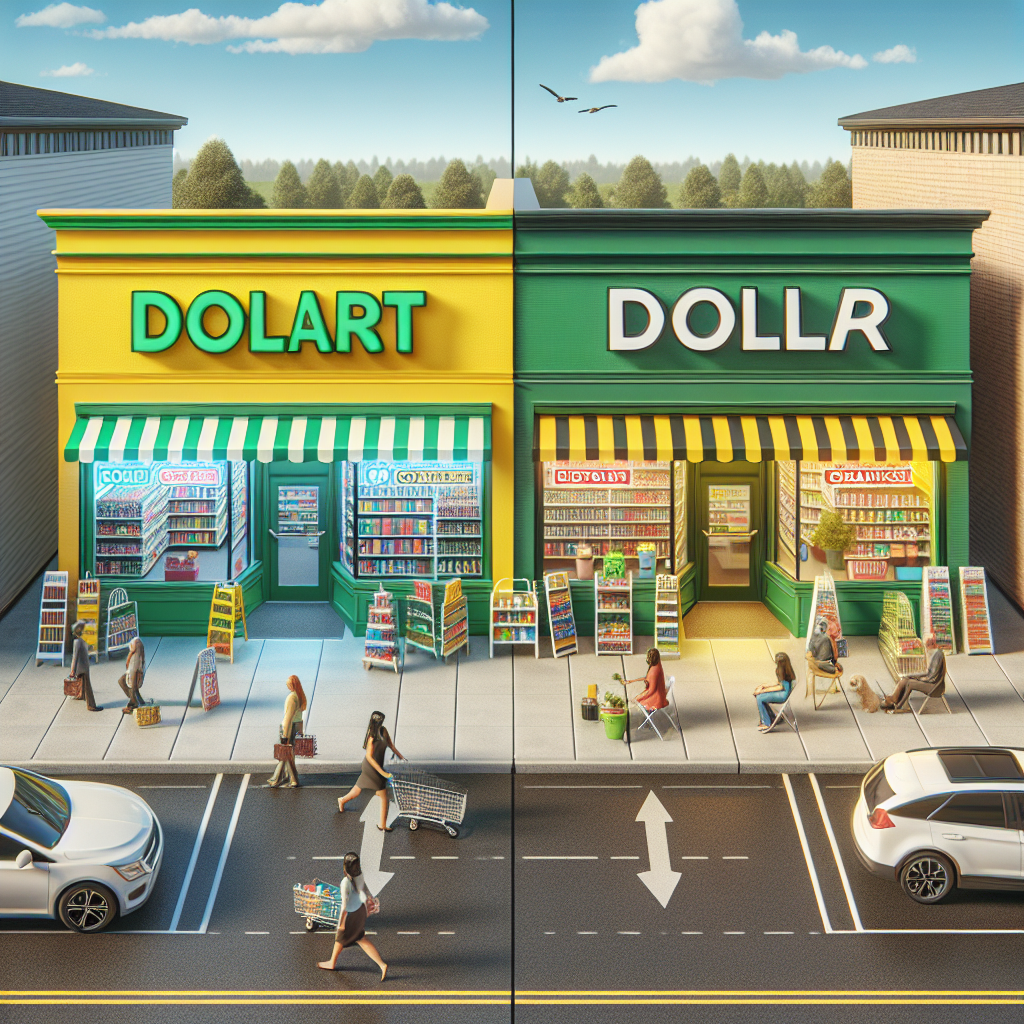Dollar General and Dollar Tree Are Both Dollar Stores, but They’re Actually Very Different. Here’s What That Means for Investors…
When it comes to budget-friendly shopping, Dollar General and Dollar Tree are often at the forefront of consumers’ minds. Both chains operate under the “dollar store” model, offering everyday essentials at low prices. However, despite sharing a similar category, these two retailers serve different niches and employ distinct strategies that can significantly impact their respective stock performance and, ultimately, investor decisions. In this article, we will delve into the differences between Dollar General and Dollar Tree and what those differences mean for investors looking to capitalize on this unique segment of the retail market.
Understanding Dollar General and Dollar Tree
While both Dollar General and Dollar Tree are known for providing affordable goods, they differ in various aspects:
1. Pricing Structure
Dollar Tree has built its brand around the idea that everything is priced at $1 (with some exceptions in recent years for items priced slightly above this threshold). This straightforward pricing strategy attracts budget-conscious shoppers seeking low-cost items.
On the other hand, Dollar General employs a more flexible pricing model. While many items can be found for under $5, the store also offers products at higher price points. This allows Dollar General to cater to a broader audience by providing more variety in product selection. Customers can find everything from household goods to clothing, with many items priced at various levels that go beyond the traditional dollar store concept.
2. Product Variety
The selection of products available at these two stores further highlights their differences.
- Dollar Tree primarily focuses on consumables, seasonal items, and basic household products. You’ll find a wide array of snacks, beauty products, and party supplies, all typically available at the $1 price point.
- Dollar General, however, offers a much wider range of products. This includes not only consumables but also clothing, electronics, and home goods. The ability to carry a broader inventory means that Dollar General can cater to various shopping needs beyond just the most basic essentials.
3. Store Format and Locations
In terms of physical presence, Dollar General and Dollar Tree also take different approaches.
- Dollar General has over 18,000 stores across the United States, primarily located in rural and suburban areas. This makes it highly accessible for customers in regions that might lack larger retail options.
- Dollar Tree, on the other hand, has a more urban presence with over 15,000 locations, which often situate in shopping plazas and urban centers. This allows it to attract a different customer base, often comprising more city-dwelling consumers.
Financial Performance and Growth Potential
For investors, understanding the financial metrics and growth potential of both companies is crucial:
1. Revenue and Profitability
The financial performance of Dollar General and Dollar Tree can vary widely due to their different business models.
– Dollar General has shown a consistent track record of revenue growth, often reporting robust quarterly earnings. The flexibility in pricing and product variety enables it to generate higher average transaction values, which can lead to increased profitability.
– Dollar Tree, while also experiencing growth, has faced challenges in maintaining profitability due to its strict pricing structure. The company’s decision to keep many items at $1 limits its ability to adjust prices to meet rising operational costs. However, recent efforts to introduce items above $1 may help boost profitability as the company adapts to market conditions.
2. Expansion Strategies
Both companies have distinct approaches to growth:
– Dollar General has aggressively expanded its footprint, often opening new locations in underserved areas. Its strategy includes remodeling existing stores and adding new products to attract a broader customer base. The company aims to open approximately 1,000 new stores annually, showcasing its commitment to growth.
– Dollar Tree has pursued a slightly different route by focusing on acquiring Family Dollar stores, which allows it to tap into a different demographic of shoppers. This merger has provided Dollar Tree with increased market presence, although integrating the two brands presents its own challenges.
Market Trends and Consumer Behavior
The retail landscape has undergone significant changes, particularly in response to economic fluctuations. Understanding these trends is vital for investors.
1. Economic Resilience
Dollar stores, including Dollar General and Dollar Tree, have shown remarkable resilience during economic downturns. As consumers seek ways to save money, both retailers often see increased foot traffic and sales. The ongoing inflationary pressures have also contributed to the growth of dollar stores, as more consumers look for affordable alternatives for their daily needs.
2. E-commerce and Omnichannel Strategies
With the rise of e-commerce, both chains are also adapting to changing consumer behavior.
– Dollar General has been exploring e-commerce options, integrating online shopping with in-store pickup to cater to a wider audience.
– Dollar Tree has made strides in enhancing its online presence, aiming to compete with larger retailers in the e-commerce space. However, its traditional model of low-cost items may limit its ability to scale an online business effectively.
Investor Considerations
As you evaluate Dollar General and Dollar Tree for potential investments, keep in mind the following factors:
- Market Position: Consider each company’s position within the retail landscape and its ability to adapt to market changes.
- Financial Stability: Analyze the financial metrics, including revenue growth, profitability, and debt levels.
- Expansion Strategies: Assess the effectiveness of their growth strategies and how they plan to navigate the challenges ahead.
- Consumer Trends: Monitor consumer behavior and economic trends that could impact sales at both stores.
Conclusion
Dollar General and Dollar Tree may both fall under the dollar store category, but their differences are pronounced. With distinct pricing structures, product offerings, and growth strategies, they provide unique opportunities and challenges for investors.
Understanding these nuances is essential for making informed investment decisions. As the retail landscape continues to evolve, keeping a close eye on both companies will allow investors to capitalize on the growing dollar store market while balancing the risks associated with each business model. Ultimately, being well-informed will lead to wiser investment choices in this competitive retail sector.



